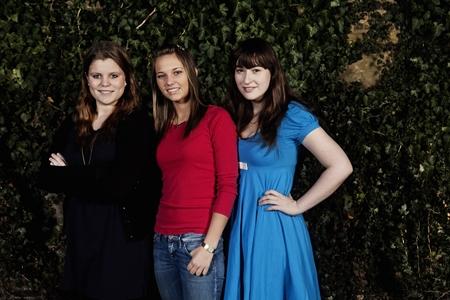"Usynlige piger" tracks three teenage girls, Maria, Maiken and Silan, who feel left out in school and are struggling to break free of their role as outsiders. Loneliness, the director Sidse Stausholm says, is a vast, all too overlooked problem for children and teens.
"Loneliness is a really hard thing to own up to. It's not something you choose. There's nothing cool about it. It's just painful."
"I heard a youth researcher say that having friends is one of the most important things for kids in the lowest grades. Kids' problems more often involve their friends than divorce, alcohol, drugs or violence, as the media would have you believe," Stausholm says.
She and the other directors of the "Næsten voksen" series were out to create some very everyday-type documentaries about ordinary young people.
"We didn’t want to seem like shocked grownups. We wanted to meet the kids at their level," she says.
The loneliness taboo
The director says most people will recognise the feeling of being branded as lonely. "It’s such a taboo," she says. When she went looking for her youthful protagonists, she found it was much easier to get cutters and anorexics to come forward than kids who are 'just' lonely.
"Loneliness is a really hard thing to own up to. It's not something you choose. There's nothing cool about it. It's just painful. This was the toughest casting call I was ever involved in," she says.
Casting around for her three protagonists, Stausholm was resolved not to make a spectacle of them. She deliberately picked girls who had the strength to break out of the role of outsider. There has to be a light at the end of the tunnel, she says.
"It was really important for me to work with some girls that I thought had real potential to grow," Stausholm says. "It’s a heavy subject. They are so upset. And it would be really bleak if the film just left them mired in their problems. So I made an advance agreement with the girls to film over a long period and not abandon them if they were having a hard time."
At one point, Stausholm grew concerned about where Maiken was heading. Maiken was being teased in school, but luckily she pulled through.
"The great thing about teenagers is they are so full of life. They have wild mood swings. All three girls were on a rollercoaster while we were making the film, but luckily they all made it through," Stausholm says.
Dealing with it yourself
Shooting the film, the director realised how hard it is to film loneliness. In one case, she asked the girls to chat with each other about how they were feeling. Later they recorded some of their statements as dialogue for animated characters.
All three girls have since moved on to other schools. Still, they were nervous up to the film opening about having to confront the same kind of derision they had put behind them. They realise that some of their former classmates might take offence, but they are ready for it. Their primary motivation for doing the film was always to help other kids in similar situations. The film shows how hard it is to break a negative pattern and how it's not always possible to get help from outside. Though all three girls' parents are there for them, neither parents nor teachers were able to change the mechanisms of a group of kids in any meaningful way.
"All three girls came to that realisation. They all found themselves in situations where they had to step up and deal with it themselves," Stausholm says.
The director hopes that other lonely kids and the people in their lives will see the film and learn from it.
"I hope the film will make people realise that it is possible to change your behaviour," she says. "If we think about our own class in school, we know who was feeling like this at some point. Maybe it was us. Sometimes it's totally random who is left out."

